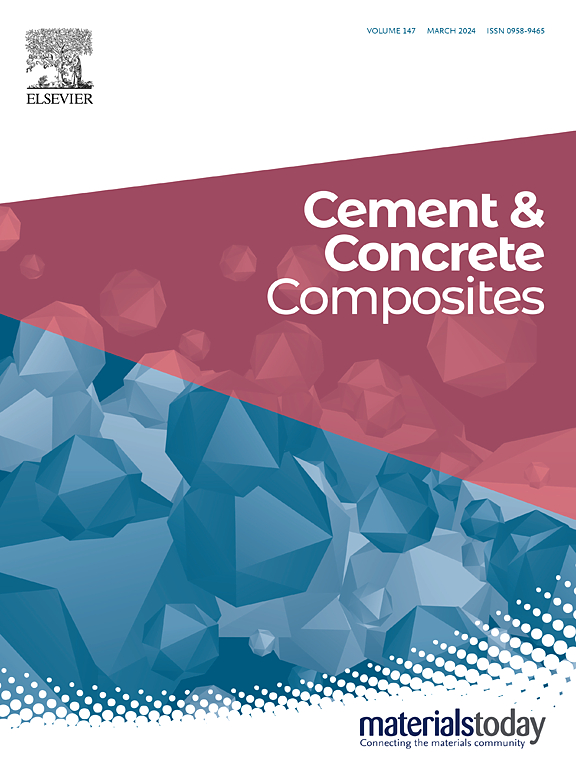用氢核磁共振(1H NMR)表征水泥基材料在原位冻融循环过程中的水分迁移和相变
IF 13.1
1区 工程技术
Q1 CONSTRUCTION & BUILDING TECHNOLOGY
引用次数: 0
摘要
了解水泥基材料在冻融过程中的水分迁移和相变,对于评估寒区结构的剩余使用寿命具有重要意义。本研究利用核磁共振氢谱(1H NMR)研究了水泥浆体在原位冻融循环过程中的水分迁移和相变。建立了不同冻融循环和温度条件下的含冰量计算模型,并在此基础上计算了冻融恶化过程中的能量变化。这些见解为水泥基材料的损伤机制提供了新的视角。冻融破坏过程分为三个阶段:劣化积累阶段、劣化加速阶段和破坏阶段。在这些阶段检查了水分迁移和相变的差异。结果表明,1H NMR技术可以有效表征冻融循环过程中的水分迁移和相变。此外,水泥浆体在冻融破坏过程的各个阶段所承受的累积能量是恒定的。该研究为理解冻融损伤机理提供了理论基础。本文章由计算机程序翻译,如有差异,请以英文原文为准。
Characterizing the moisture migration and phase transition in cement-based materials during in-situ freeze-thaw cycles by hydrogen nuclear magnetic resonance (1H NMR)
Understanding the moisture migration and phase transition in cement-based materials during freeze-thaw processes is of great significance for evaluating the remaining service life of structures in cold regions. This study explores moisture migration and phase transition in cement paste during in-situ freeze-thaw cycles by 1H NMR. A model is established to calculate ice content under varying freeze-thaw cycles and temperatures, with energy changes during freeze-thaw deterioration also computed based on this ice content model. These insights shed new light on the damage mechanisms of cement-based materials. The findings reveal a three-stage freeze-thaw damage process: deterioration accumulation, deterioration acceleration, and failure stage. Differences in moisture migration and phase transitions are examined throughout these stages. Results indicate that 1H NMR technology effectively characterizes moisture migration and phase transitions during freeze-thaw cycles. Furthermore, the cumulative energy sustained by the cement paste at each stage of freeze-thaw damage process is constant. This study provides a theoretical foundation for understanding the freeze-thaw damage mechanism.
求助全文
通过发布文献求助,成功后即可免费获取论文全文。
去求助
来源期刊

Cement & concrete composites
工程技术-材料科学:复合
CiteScore
18.70
自引率
11.40%
发文量
459
审稿时长
65 days
期刊介绍:
Cement & concrete composites focuses on advancements in cement-concrete composite technology and the production, use, and performance of cement-based construction materials. It covers a wide range of materials, including fiber-reinforced composites, polymer composites, ferrocement, and those incorporating special aggregates or waste materials. Major themes include microstructure, material properties, testing, durability, mechanics, modeling, design, fabrication, and practical applications. The journal welcomes papers on structural behavior, field studies, repair and maintenance, serviceability, and sustainability. It aims to enhance understanding, provide a platform for unconventional materials, promote low-cost energy-saving materials, and bridge the gap between materials science, engineering, and construction. Special issues on emerging topics are also published to encourage collaboration between materials scientists, engineers, designers, and fabricators.
 求助内容:
求助内容: 应助结果提醒方式:
应助结果提醒方式:


